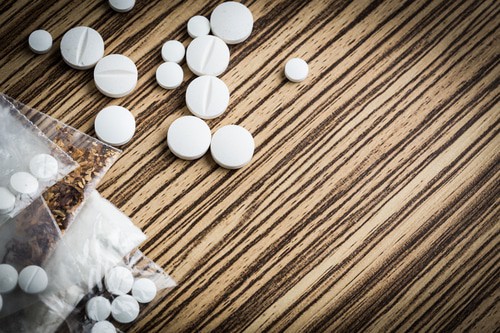Alcohol use among adolescents is a serious problem. About one in every five high school seniors has had at least one drink in the past month. That’s more than double the number who reported using alcohol in the past year. Adolescents are more likely to experiment with alcohol than adults, and this risk-taking behavior often continues into adulthood.
Because adolescent brains are still developing, they are more likely to feel the effects of alcohol than adults, who have experiences in adulthood that reduce their tolerance. Read on to learn more about the risks of drinking and how to address alcohol abuse among teens.

What is Alcohol Abuse?
Drinking alcohol is a normal and healthy part of growing up. However, underage drinking and its consequences can be more serious. The effects of drinking depend on a number of factors, including your body’s age when you first start drinking. Some teens’ metabolisms are only fully developed after the age of 25.
Here are some of the warning signs that you may be drinking too much and/or getting negative side effects from alcohol:
- Excessive drinking – You are drinking more than you should be, which is why it’s important to examine your drinking habits carefully. Are you drinking more than you usually would, and what’s going on around you when you’re drinking?
- Impaired judgment – You may be attracted to higher-risk behaviors such as marketing, ABUSE, and SNuffR.
- Decreased Interest in Social Activities – Getting involved in extracurricular activities—such as sports, participating in a club, or joining a chapter of a fraternal organization—is a good way to meet friends and connect with others. But when your social life is consumed by drinking, it’s likely you’ll lose touch with your old friends.
- Increased Risk of Involving Others – When you use, you may start involving others in your drinking habits, who may then start to do so as well. Involving others is a good way to meet others in the habit of drinking.
How Widespread is Adolescent Alcohol Abuse?
Research shows that alcohol use is more common in adolescents than in adults, with about one in five high school seniors having used alcohol in the past month. This is similar to the rate of alcohol use in teens seen in studies of adults.
In fact, research shows that the rate of drinking in adolescents is consistent with rates in young adults. National surveys conducted in recent years have found that one in nine teens report drinking in the past month, and one in five report having done so in the past year.
Who is at Risk?
Children and adolescents are often at risk for developing harmful liver, pancreatic, and other diseases related to alcohol abuse and neglect. Adolescents also may be more vulnerable to the side effects of certain drugs, including an increased risk of addiction.
Here are some specific groups of adolescents at risk for alcohol misuse:
- Kids ages 12 to 15. Almost one third of high school seniors have used alcohol in the past year, and about one in five have used it frequently.
- Children age 16 to 17. About one in ten high school students age 16 to 17 report having used alcohol in the past year, and one in five report having used it frequently.
- Children and teens with a Body Mass Index (BMI) of 30 or higher. A BMI of 30 is considered severely overweight.
How to Spot the Early Signs of Alcohol Abuse Among Teens
- Impaired Judgment – They may be attracted to higher-risk behaviors such as driving while intoxicated, engaging in risky sexual encounters, and putting themselves in harm’s way.
- Decreased Interest in Social Activities – Getting involved in extracurricular activities—such as sports, participating in a club, or joining a chapter of a fraternal organization—is a good way to meet friends and connect with others. But when their social life is consumed by drinking, it’s likely they’ll lose touch with friends.
- Increased Risk of Involving Others – When they drink, they may start involving others in their drinking habits, who then start to do so as well.
How to Address Adolescent Alcohol Abuse
Your child may pose a substance abuse problem during adolescence. If your child is in the midst of alcohol or other drug crisis, you may wish to address it during this period. Otherwise, you can address substance use after your child’s high school graduation.
To address substance abuse during adolescence, you’ll need to understand the root of the problem and know who to contact if you think something is not right. Here are some questions to get you started:
- What were your child’s main drugs of abuse during high school?
- How often did your child use during high school?
- How much did your child drink each day?
- How much does your child’s social life involve alcohol?
How to Prevent Alcohol Abuse in the Future
Although you can’t prevent drinking by stopping drinking yourself, you can take steps to reduce the chances of it happening in the first place. Here are some ways:
- Limit your child’s exposure to alcohol.
- Exercise caution around alcohol, especially among minors.
- Get your child into a healthy eating pattern.
Bottom line
Saying your child must stop drinking is not a serious proposal. Similarly, although you can’t prevent drinking, you can take steps to reduce the chances of it happening in the first place.
If your child is starting to abuse alcohol, you may want to take action. Recognize the signs and symptoms and seek help immediately. Remember, you aren’t the parent who spanked your child, so don’t demean or shame yourself if you think something needs to be done. Reach out to professionals for help.
Asheville Recovery Center is Here for You
Fortunately, there are ways to prevent alcohol abuse and help those who are already struggling. If you or someone you know is struggling with addiction, it is important to get treatment. At Asheville Recovery Center treatment specialists utilize a 12-step program and practice holistic rehabilitation.
Services at the center include:
partial hospitalization program – At Asheville Recovery Center we offer a partial hospitalization program for clients who need post-residential treatment as well as for clients who need primary treatment but are unable to enroll in inpatient programs. Our PHP track offers a variety of therapeutic services and benefits to individuals in early recovery from substance addiction.
Outpatient Rehabilitation – During intensive outpatient treatment (IOP), clients live at home or in a sober living residence while completing an addiction treatment program. IOP is a place where clients can process their experiences in twelve-step fellowships and support one another in those individual journeys.
Addiction is difficult to overcome alone. If you feel that you or a loved one is struggling with alcohol abuse, our specialists are on standby and ready to help. Call and speak with an addiction expert today.









